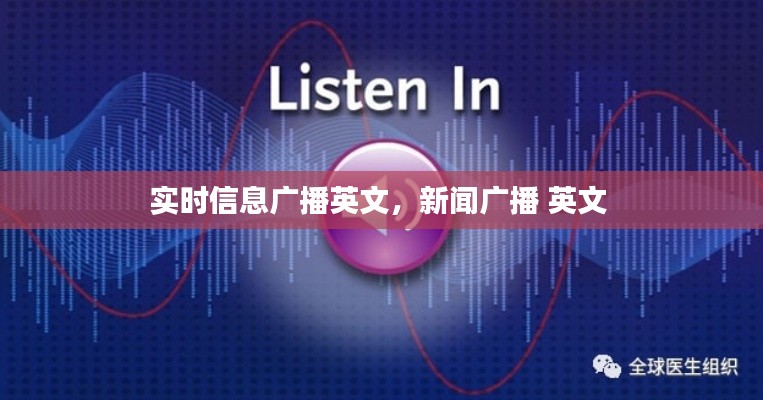Introduction to Real-Time Information Broadcasting
Real-time information broadcasting has become an integral part of modern communication systems. With the rapid advancement of technology, the ability to disseminate information instantly has transformed the way we receive and process news, updates, and alerts. This article explores the concept of real-time information broadcasting, its significance, and the various platforms that facilitate this fast-paced communication.
What is Real-Time Information Broadcasting?
Real-time information broadcasting refers to the immediate transmission of news, events, or updates to a wide audience. It involves the use of various communication channels, such as television, radio, internet, and mobile devices, to ensure that information is delivered as soon as it becomes available. This form of broadcasting is characterized by its speed, accuracy, and widespread reach.
Significance of Real-Time Information Broadcasting
The significance of real-time information broadcasting cannot be overstated. Here are some key reasons why it is crucial in today's world:
Emergency Communication: During natural disasters, accidents, or other emergencies, real-time broadcasting allows authorities to provide critical information and instructions to the public promptly.
News Reporting: Real-time broadcasting enables journalists to report breaking news stories, providing audiences with the most up-to-date information.
Public Awareness: By disseminating important updates and alerts, real-time broadcasting helps raise public awareness on various issues, such as health crises, political events, or social movements.
Business Operations: Companies can use real-time broadcasting to communicate with their customers, employees, and stakeholders, ensuring that everyone is on the same page regarding important business decisions and updates.
Technologies Facilitating Real-Time Information Broadcasting
Several technologies have contributed to the evolution of real-time information broadcasting. Here are some of the key technologies:
Internet: The internet has revolutionized the way information is broadcasted. With high-speed internet connections, data can be transmitted almost instantaneously, allowing for real-time broadcasting across various platforms.
Satellite Communication: Satellite technology enables real-time broadcasting to reach remote areas, ensuring that information is accessible to a global audience.
Mobile Devices: The proliferation of smartphones and tablets has made real-time information broadcasting more accessible to the general public. People can receive updates and alerts directly on their mobile devices.
Social Media: Platforms like Twitter, Facebook, and Instagram have become popular channels for real-time broadcasting, allowing individuals and organizations to share information quickly and easily.
Challenges and Considerations
While real-time information broadcasting offers numerous benefits, it also comes with challenges and considerations:
Accuracy: Ensuring the accuracy of information in real-time can be challenging, especially during breaking news situations where details may still be developing.
Security: The rapid dissemination of information can pose security risks, particularly in the context of cyber threats and misinformation campaigns.
Accessibility: Ensuring that real-time information is accessible to everyone, including individuals with disabilities, is an ongoing challenge.
Future of Real-Time Information Broadcasting
The future of real-time information broadcasting is likely to be shaped by further technological advancements. Here are some potential developments:
Augmented Reality (AR) and Virtual Reality (VR): These technologies could enhance the way real-time information is presented, allowing users to experience events and news in immersive ways.
Artificial Intelligence (AI): AI could play a significant role in filtering and curating real-time information, ensuring that users receive relevant and accurate content.
Blockchain: Blockchain technology could improve the security and transparency of real-time information broadcasting, making it harder for misinformation to spread.
Conclusion
Real-time information broadcasting has become a cornerstone of modern communication. Its ability to deliver information instantly has transformed the way we interact with the world around us. As technology continues to evolve, the future of real-time broadcasting looks promising, with new and innovative ways to disseminate information that
转载请注明来自马鞍山同杰良,本文标题:《实时信息广播英文,新闻广播 英文 》













 皖ICP备2022015489号-1
皖ICP备2022015489号-1